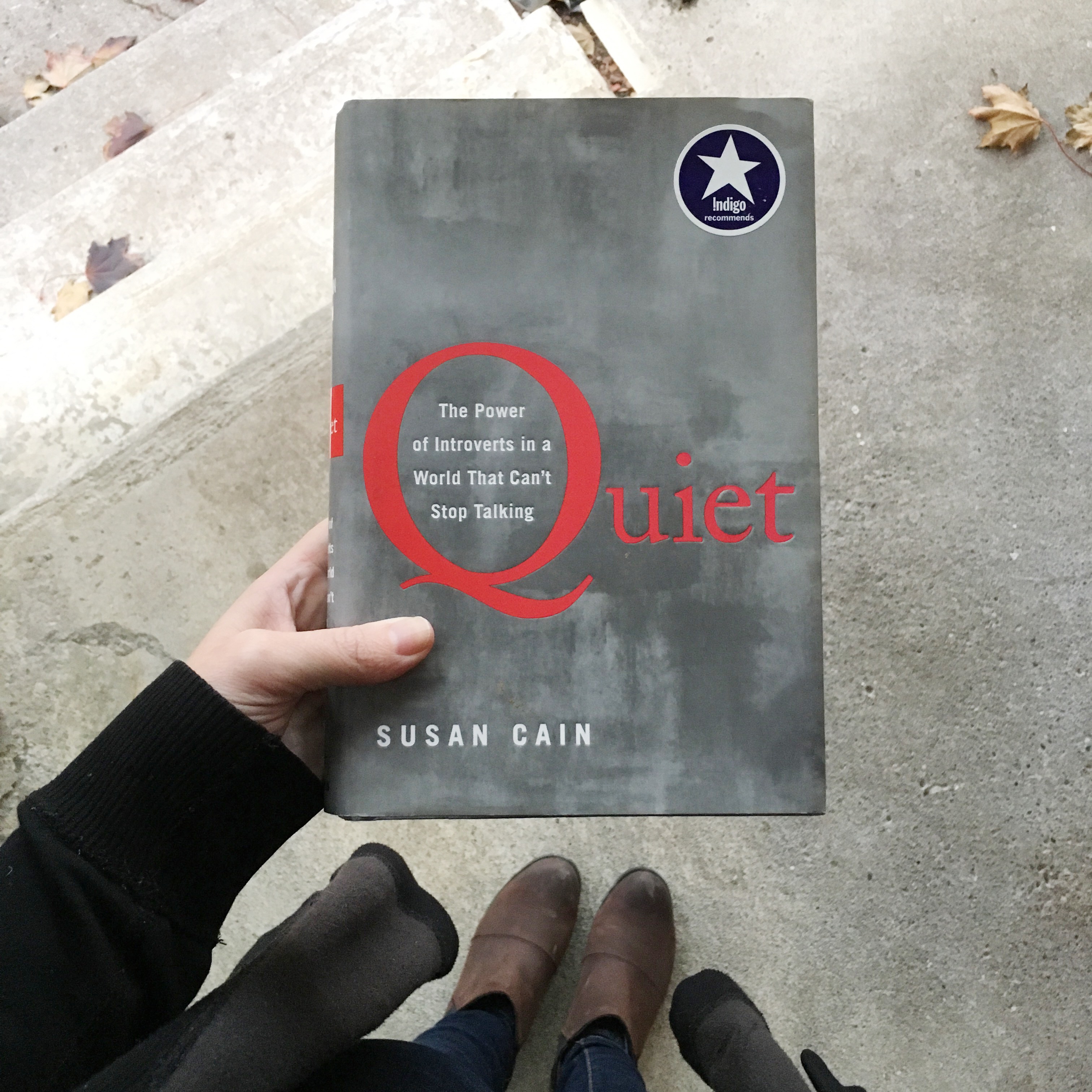On the first day we met Face to Face as a cohort, I was in the initial phases of formulating the questions and challenges I wanted to take on this year. I knew I wanted my focus to be somehow connected to oral communication. As a second language teacher, I spend a good part of my day encouraging people to speak. To take risks. To make mistakes in front of their peers. For my students, I recognize that this is not easy and it is not for everyone. So, how do we do it anyways?
My coach, @acampbellrogers, told me I’d probably be interested in reading Quiet by Susan Cain. This book describes what life is like for introverts and how we can harness the power of those who aren’t often the loudest speakers in the room.
I consider myself a velocireader, so I’m always happy to take on new book recommendations. I immediately borrowed a copy from a co-worker and started reading.
Quiet really has me asking myself what speaking fluidly means and has shifted my perspective. Speaking slowly doesn’t mean that a student is not speaking fluidly. Additionally, the medium is not always the message. If the message is thoughtful, there is room in second-language education to acknowledge this, even if it is “easier” to evaluate errors that are right and wrong. And my students who are fluent and don’t speak extensively in class are still fluent. As I enter report card season, this is something I am keeping in my mind much more than I ever have before.
Another interesting point is that the rise of social media and the Internet has given introverts a “voice”, especially with writing. My question is, “How can I transfer this to oral communication?” Flipgrid is a start.
Being mindful of seating was something else that I had never thought of before. Don’t seat quiet students in “high-traffic or high-interaction” areas. It will increase anxiety, decrease concentration, and they won’t actually speak more.
And finally, never underestimate the power of empathy. I’d like to find more opportunities to check in with my introverted students before presentations. To encourage them. To tell them that I also get nervous, but it does get easier with time. I loved reading how we should teach our students the importance of rehearsal and practice. This is a concept I’ve been hammering home with my students more recently, and it’s validating to read that I’m on the right track with this one.
I’d definitely say that Quiet is a must-read for second-language teachers. It certainly gave me quite a bit to think about!
Jenn

Thank for sharing this book Jennifer. I have myself in my class students that are introverts. As we are doing art oratoire in January, I am offering a lot of practice to prepare their text and rehearse at home and in front of me. We have an art drama teacher coming once a week and in common and with the assistance of the students, we have elaborate criteria to improve their communication skills.
Happy New Year 2019 Jennifer!
Yes @jbairos, such a powerful read essential to us introverts and, as you capture so well, teachers in general. It’s clearly provided you with some important perspective, particularly around assessment. Thank you for sharing! In this way, you’ve captured the necessary struggle of all of us; To what extent are we thoughtfully positioning each individual student so that they can clearly convey, and we can accurately capture, and describe, their learning?
@mneale @acampbellrogers @ashaikh
I had never even consciously thought of where I seat my more introverted students in my classroom. It gave me a lot of think about, that’s for sure. I’m so glad I read this book.
I absolutely love this book @jbairos – it certainly changed the way I look at things! I especially appreciate how you’ve taken some of the abstract ideas and applied them to your goals for oral communication (very cool!)
Thank you! I really believe that all FSL teachers should read this book. It has so much value for educators.
Such an interesting topic.
Empathizing with students before public speaking can make a huge difference in their fear of standing in front of their peers. Empathy has the ability to feel another person’s emotions as if they are your own. In many ways, being empathic is a gift, because it allows you to fully experience, understand, and support your students. I know it helped me when as a child when the teacher finally “understood” me. I knew right then it was okay to make mistakes and not being perfect was actually normal.
Also, I thought of this Simon Sinek video https://www.youtube.com/watch?v=NdNdPJDsgXg on “Why leaders should speak last”. Some of these introvert students in your classroom may become leaders of tomorrow.
Hi Afzal, Thank you for sharing this video. It’s such a wonderful message. I’m going to remember to try this myself. Jenn
Thanks for pointing me back to this book. I reviewed this book (https://cohort21.com/garthnichols/social-media/book-review-quiet/) when we were rethinking Leadership at HC. I took so many great insights away as well – one of which was that Susan Cain and Heidi Kasevich have started the Quiet Schools Network. One of the key outcomes of this initiative was to rebalance schools away from the extravert bias through how we set up classrooms, how we assess students and how we report on student participation in our report cards and Parent-Teacher interviews. This is a game-changer for shifting how we position ourselves as educators to support all learners in the classroom!
Thanks again,
Garth.